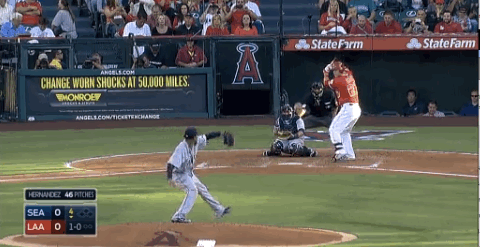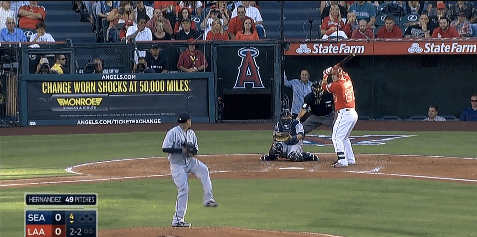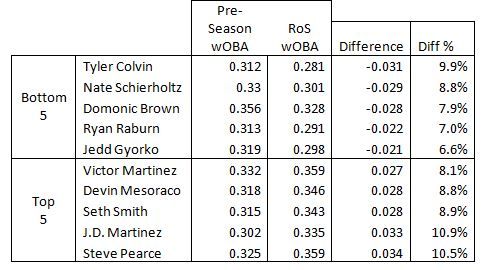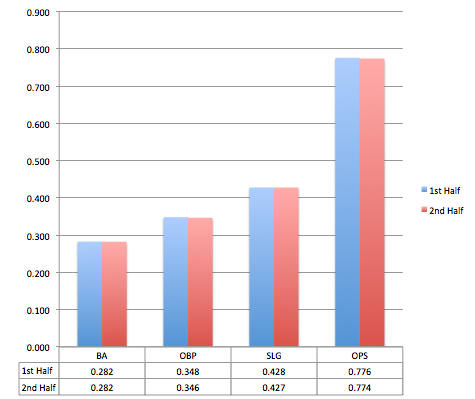Gregory Polanco’s Power Struggle
Baseball has spoiled us. For the past two years baseball teams, spectators, and analysts have been in awe of the young talent in the game. Last year, the likes of Yasiel Puig and Jose Fernandez came out of nowhere and dominated the league. The year before, Mike Trout and Bryce Harper came up and were beyond exceptional baseball players.
This year has been a little bit dry in terms of top prospects coming up and turning into the best players in the league. George Springer has been an exciting player to watch but not dominant like Trout, Puig or Fernandez. There’s a case to be made for Jose Abreu, but he was an international signing. Abreu wasn’t developed in the White Sox’ farm system for multiple years. Instead, Abreu was major league ready upon signing his contract.
The other top prospect whose performance hasn’t been captivating — at least during his first month in the big leagues — is Gregory Polanco.
Polanco is considered an extremely toolsy young player. Most scouting reports agree that Polanco has a pretty good glove — profiling as a corner outfielder — and he has a good arm. Polanco’s bat has been more of a projection than a reality. In the minors it was easy to see that he had some talent. In his minor league career he put up an .842 OPS. There were still some rough edges around Polanco’s game as his ability to hit for power fluctuated during his time in the minors.
| Season | Team | PA | ISO | SLG |
|---|---|---|---|---|
| 2010 | Pirates (R) | 200 | 0.085 | 0.287 |
| 2011 | Pirates (R) | 203 | 0.124 | 0.361 |
| 2011 | Pirates (A-) | 10 | 0.000 | 0.100 |
| 2012 | Pirates (A) | 485 | 0.197 | 0.522 |
| 2013 | Pirate (A+) | 241 | 0.161 | 0.472 |
| 2013 | Pirates (AA) | 286 | 0.144 | 0.407 |
| 2013 | Pirates (AAA) | 9 | 0.000 | 0.222 |
| 2014 | Pirate (AAA) | 274 | 0.194 | 0.540 |
There were times in Polanco’s minor-league career in which he hit for decent power, but he definitely bounced back and forth between having above-average power and power outages. In his 2014 Pittsburgh Pirates Top Prospects post, Marc Hulet described some of Polanco’s difficulties:
“At the plate, he flashes the ability to hit for both average and power but he’s still learning to identify and handle breaking balls.”
Polanco has been in the big leagues for about 40 games. In his first couple of plate appearance he looked like a pretty dynamic toolsy outfielder. However, as he has accrued more plate appearances, it has become apparent that he is still an unfinished product. Polanco has hit .247/.324/.352. which has been good for a WAR of 0.2. This is a pretty small sample size of only 183 PA’s, however Polanco has been having difficulty hitting for power. Right now Polanco is getting on base a decent amount, but his lack of power offsets the value of his ability to get on base.
| Pitch Type | Count | AB | K | BB | HBP | 1B | 2B | 3B | HR | BAA | SLG | ISO | BABIP |
|---|---|---|---|---|---|---|---|---|---|---|---|---|---|
| Fourseam | 230 | 46 | 6 | 8 | 0 | 11 | 2 | 0 | 0 | .283 | .326 | .044 | .325 |
| Sinker | 207 | 37 | 6 | 8 | 0 | 6 | 0 | 0 | 0 | .162 | .162 | .000 | .194 |
| Change | 57 | 13 | 3 | 0 | 0 | 6 | 0 | 0 | 0 | .462 | .462 | .000 | .600 |
| Slider | 111 | 32 | 9 | 2 | 0 | 5 | 0 | 0 | 3 | .250 | .531 | .281 | .250 |
| Curve | 56 | 12 | 5 | 1 | 0 | 1 | 0 | 0 | 1 | .167 | .417 | .250 | .167 |
| Cutter | 66 | 14 | 5 | 1 | 0 | 3 | 0 | 0 | 1 | .286 | .500 | .214 | .375 |
| Split | 26 | 9 | 2 | 0 | 0 | 1 | 0 | 0 | 0 | .111 | .111 | .000 | .143 |
| Slow Curve | 1 | 0 | 0 | 0 | 0 | 0 | 0 | 0 | 0 | .000 | .000 | .000 | .000 |
Pitchers have mostly fed Polanco fastballs. In his first 40 games, Polanco has seen a fastball around 60% of the time, and that’s the pitch against which he seems to be able to have the most success. Polanco also doesn’t hit for a lot of power when he does make contact with a fastball (.044 ISO against fastballs). Despite that, Polanco was known for not being able to handle breaking balls — in the minors — so far he has actually been able to take advantage of some curveballs, cutters and sliders. All five of the home runs he has hit have come off of either a slider, a curveball or a cutter. The story seems to be that he can catch up to the hard stuff, but doing something meaningful with it is a different story.
We’re dealing with a small sample size, so we don’t know whether Polanco has a propensity for hitting sliders, cutters, and curveballs a long ways. Other off-speed/breaking pitches — such as sinkers and splitters — have been difficult for Polanco to hit.
| 2014 | O-Swing% | Z-Swing% | Swing% | O-Contact% | Z-Contact% | Contact% | Zone% | F-Strike% | SwStr% |
|---|---|---|---|---|---|---|---|---|---|
| League | 30.6% | 65.7% | 46.4% | 66.0% | 87.4% | 79.6% | 45.1% | 60.1% | 9.2% |
| Polanco | 28.3% | 59.3% | 41.4% | 53.3% | 88.3% | 74.4% | 42.1% | 54.2% | 10.0% |
Polanco is still showing good knowledge of the strike zone as he’s drawing a lot of walks this season. Despite his proclivity for drawing walks, there are some issues with his plate discipline stats. These mainly have to do with his ability to make contact. While Polanco does swing at lower number of pitches outside of the zone — with an O-Swing% of 28% — he only makes contact with those pitches 53% of the time.
The only good part of Polanco’s offensive performance has been his ability to draw walks. However, if you’re not making enough contact and not hitting for power, that doesn’t make you a productive major-league hitter.
Polanco has not necessarily been a great hitter in his first couple of months in the majors. I’m sure some people expected Polanco to step in and be one of the best hitters in the game. The truth is that this game is incredibly hard, and there are certainly growing pains when it comes to young players. Polanco has to figure out how to hit for more power to be a useful major leaguer. He hasn’t done that.
That doesn’t mean that Polanco won’t do it; we are dealing with a small sample size of just 183 PA’s, and it’s completely plausible that he makes the adjustment necessary to fix his problems. Polanco showed that he could adjust quickly. That’s why he rose so quickly through the minors; he was able to adjust to the new challenges each level presented him. Demoting Polanco is completely pointless as he hasn’t been bad, and he has nothing left to prove in the minors.
Polanco now needs to prove himself in the majors, and that might just take some time.

























